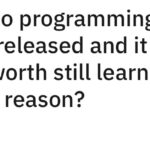Differentiated instruction is a cornerstone of modern education, designed to cater to the diverse needs of today’s students. But how exactly does this teaching approach impact student learning? This article explores the core components, benefits, and practical strategies of differentiated instruction, highlighting its profound influence on student success.
Differentiated instruction acknowledges that students learn at different paces and in various ways. Factors such as prior knowledge, learning styles, cultural backgrounds, and individual interests all contribute to a student’s unique learning profile. By tailoring instruction to these individual needs, educators can create a more engaging and effective learning environment.
The Core Principles of Differentiated Instruction
Differentiated instruction isn’t simply a single technique; it’s a comprehensive approach to teaching and learning. It involves proactively adjusting curriculum, instruction, and assessment to meet individual student needs. Key elements include:
- Content Differentiation: Adapting what students learn based on their readiness levels and interests. This might involve providing different reading materials, varying the complexity of tasks, or offering choices in project topics.
- Process Differentiation: Modifying how students learn. This could include incorporating various learning activities, such as hands-on projects, group work, or independent study, to cater to different learning styles.
- Product Differentiation: Allowing students to demonstrate their understanding in diverse ways. Examples include oral presentations, written reports, artistic creations, or multimedia projects.
- Learning Environment Differentiation: Creating a flexible and supportive classroom atmosphere that caters to different learning preferences. This might involve providing quiet areas for focused work, collaborative spaces for group projects, or access to various learning resources.
The Positive Impact of Differentiated Instruction on Students
Research consistently shows that differentiated instruction benefits students in numerous ways:
- Increased Engagement: When students are presented with material and activities that align with their interests and learning styles, they are more likely to be actively involved in the learning process.
- Improved Achievement: By addressing individual learning needs, differentiated instruction helps all students, including those with learning disabilities or gifted abilities, reach their full potential.
- Enhanced Motivation: When students feel understood and supported, their motivation to learn increases. Differentiated instruction fosters a sense of ownership and empowers students to take charge of their learning.
- Greater Independence: Differentiated instruction encourages students to become self-directed learners by providing choices and opportunities for independent work.
- Reduced Behavioral Problems: When students are engaged and challenged, they are less likely to exhibit disruptive behaviors. Differentiated instruction can create a more positive and productive classroom environment.
Effective Strategies for Differentiated Instruction
Implementing differentiated instruction effectively requires careful planning and ongoing assessment. Here are some key strategies:
- Ongoing Assessment: Regularly assess student progress to understand individual strengths and weaknesses. This can be achieved through formative assessments, observations, and student self-reflection.
- Flexible Grouping: Utilize a variety of grouping strategies, including whole-class instruction, small group activities, and individual work, to meet diverse learning needs.
- Tiered Assignments: Offer different levels of complexity within assignments to challenge students at their individual readiness levels.
- Choice Boards: Provide students with options in activities and assignments, allowing them to choose tasks that align with their interests and learning styles.
- Learning Centers: Create designated areas within the classroom where students can engage in different learning activities based on their needs and interests.
Conclusion: Empowering Learners Through Differentiation
Differentiated instruction is not merely a trend but a fundamental shift in how we approach teaching and learning. By recognizing and responding to individual student needs, differentiated instruction empowers all learners to succeed. As classrooms continue to become more diverse, embracing differentiated instruction becomes increasingly critical to ensuring equitable and effective education for all.
